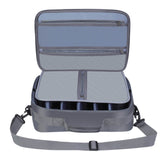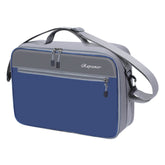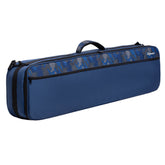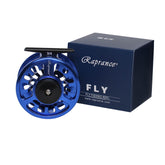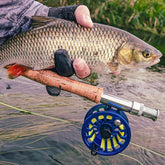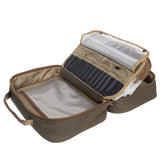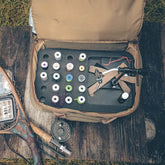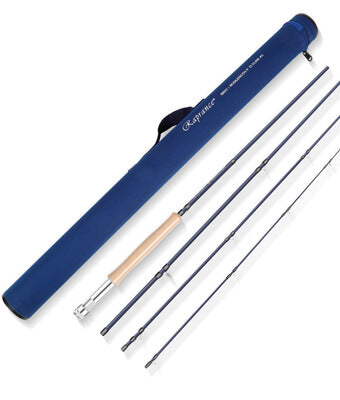Fly Rod and Reel Combos: Top Choices from Orvis, Sage, and Redington
Whenever I consider the essentials of fly fishing, the fly rod and reel combo is paramount for both novice anglers and seasoned veterans alike. In my experience, selecting the right equipment can significantly enhance your time on the water. With options like the Orvis fly rod or the Sage fly reel, there’s a combination to fit every fishing style and skill level.

For those just starting out, a well-matched fly rod and reel combo can simplify the learning curve. The Redington fly rod, for example, offers an excellent balance between performance and affordability, making it an appealing choice for newcomers. My goal is to guide you through the plethora of options available, ensuring you find the perfect setup to elevate your fishing experience.
Understanding Fly Rod and Reel Combos
Fly rod and reel combos are designed to work together as a complete package for various fishing environments. Selecting the right combo is crucial for effective angling in both freshwater and saltwater.
Components of a Fly Rod and Reel
A fly rod typically includes the rod itself, guides, and a reel seat. The rod length and action impact casting distance and accuracy. Generally, longer rods allow for greater distance, while shorter rods provide better control in tight spaces.
The reel, which holds the backing and fly line, must match the rod’s weight and action. Various options include large-arbor reels for quick line retrieval and smaller models for delicate presentations.
Common Features:
- Rod Length: Ranges from 7 to 10 feet for most freshwater applications.
- Line Weight: Measured from 1 to 12, indicating the rod's ability to cast different line types.
- Reel Type: Single-action, multi-disc drag, or sealed drag systems.
Selecting the Right Combo for Fishing Situations
Choosing the right combo depends on the fishing type and environment. For freshwater, a lighter line and rod, typically in the 3-6 weight range, work well for species like trout and panfish.
In saltwater, heavier combos (8-12 weight) provide the strength needed for larger fish. Factors such as wind conditions and target species also influence selection.
Fishing Situations:
- Trout Fishing: Use a 4-6 weight rod combo for a balanced approach.
- Bass Fishing: A 6-8 weight combo is ideal for larger flies and heavier tackle.
- Saltwater Fishing: Opt for heavier setups to manage larger species and tough conditions.
Understanding these components and situations can enhance my fishing experience significantly.
Examining Top Fly Rod Brands
In evaluating the top fly rod brands, I find that Orvis and Redington stand out for their craftsmanship and performance. Each brand offers unique features suited for various fishing conditions and target species.
Orvis Fly Rods Overview
Orvis fly rods are known for their premium quality and innovation. I appreciate their wide range, which includes options for both beginners and experienced anglers. The Helios 3 series is particularly noteworthy for its lightweight construction and sensitivity, ideal for targeting freshwater species like trout and bass.
Orvis also emphasizes customer service and warranty, allowing me to feel confident in my investment. Their rods often come with user-friendly features, making it easier to adapt to different fishing techniques and environments.
Redington Rods Analysis
Redington rods are recognized for their affordability without compromising on performance. I often recommend the Redington Classic Trout series for those starting with fly fishing. The moderate action of these rods provides excellent casting control, which is essential for catching smaller freshwater species.
Moreover, Redington offers a solid warranty program, ensuring that I have a reliable product. The selection ranges from beginner-friendly models to more specialized options, making it versatile enough for various fishing styles. The Pursuit II series epitomizes this balance, delivering quality performance for budget-conscious anglers.
Highlighting Fly Reel Excellence

When considering fly reels, the engineering and design behind them are critical for performance in both freshwater and saltwater environments. Understanding the craftsmanship of high-quality reels like those from Sage can enhance my fishing experience.
The Engineering Behind Sage Fly Reels
Sage fly reels are renowned for their precision engineering and durability. Each reel is constructed with high-grade materials that withstand the rigors of both freshwater and saltwater conditions.
Key features include:
- Machined Aluminum: Provides strength and resistance to corrosion.
- Sealed Drag Systems: Ensures smooth operation and protects against debris and water.
- Lightweight Design: Reduces fatigue during long casting sessions.
These elements contribute to the reliability and efficiency I've come to expect from Sage reels, making them suitable for varying fishing scenarios. Whether in a calm freshwater lake or challenging saltwater conditions, these reels deliver excellent performance.

